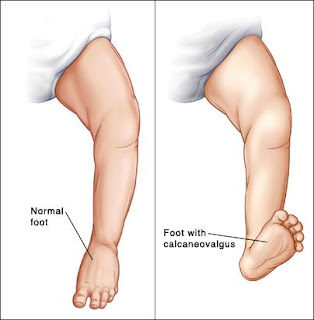1. White superficial onychomycosis presents with diffuse or speckled white discoloration of the surface of the toenails. It is caused primarily by Trichophyton mentagrophytes, which invades the nail plate. The organism may be scraped off the nail plate with a blade, but treatment is best accomplished by the addition of a topical azole antifungal agent.
2. Distal subungual onychomycosis presents with foci of onycholysis under the distal nail plate or along the lateral nail groove, followed by development of hyperkeratosis and yellow-brown discoloration. The process extends proximally, resulting in nail plate thicken and separation from the nail bed. Trichophyton rubrum and, occasionally, T. mentagrophytes infect the toenails; fingernail disease is almost exclusively due to T. rubrum, which may be associated with superficial scaling of the plantar surface of the feet and often of one hand. These dermatophytes are found most readily at the most proximal area of the nail bed or adjacent ventral portion of the nail plates that are involved. Topical therapies such as ciclopirox 8% lacquer may be effective for solitary nail infection. Because of their long half-life in the nail, terbinafine or itraconazole may be effective when given as pulse therapy (1 wk of each mo for 3–4 mo). Either agent is superior to griseofulvin, fluconazole, orketoconazole. The risks, the most concerning of which is hepatic toxicity, and costs of oral therapy must be weighed carefully against the benefits of treatment for a condition that generally causes only cosmetic problems.

















































